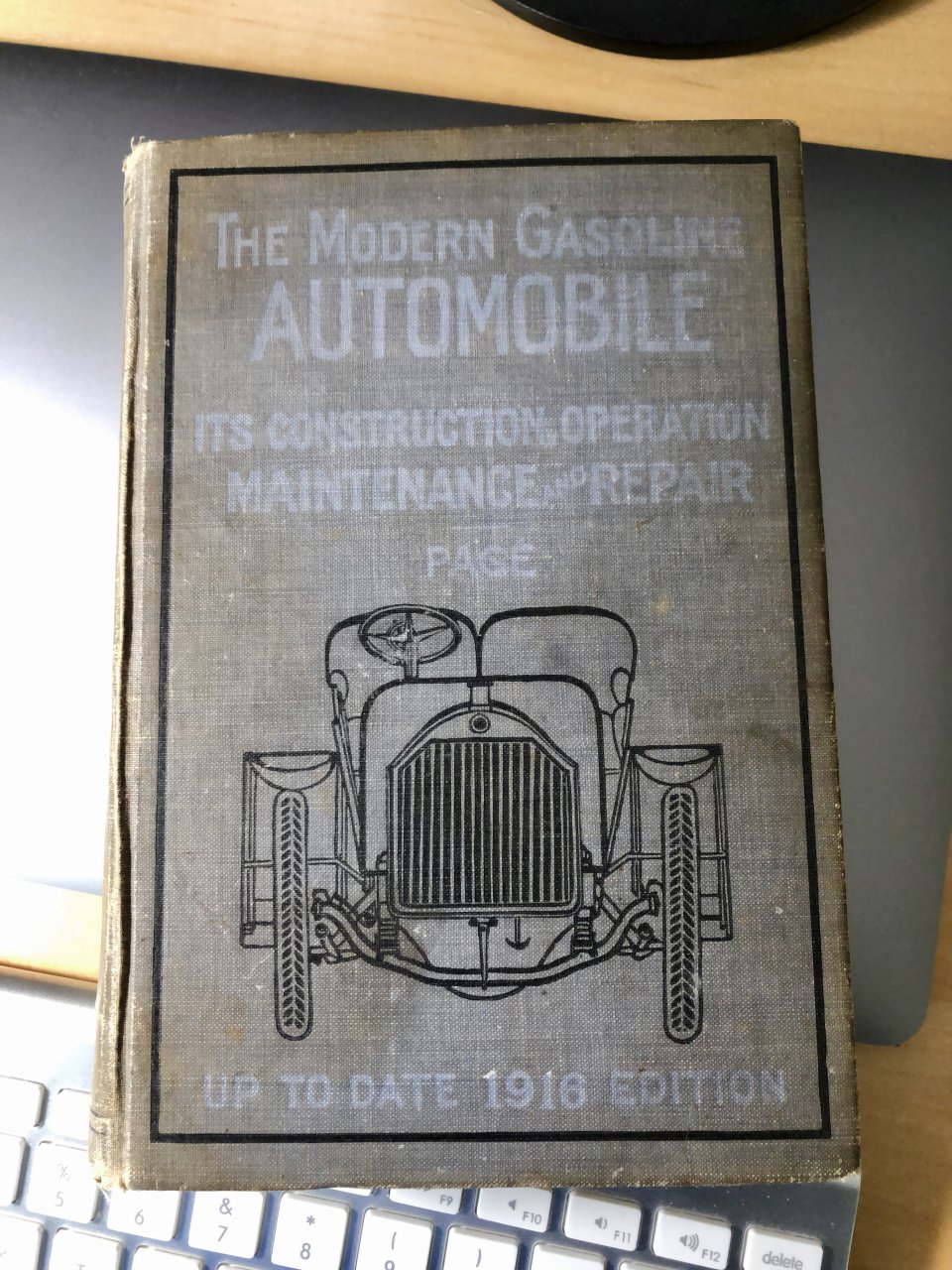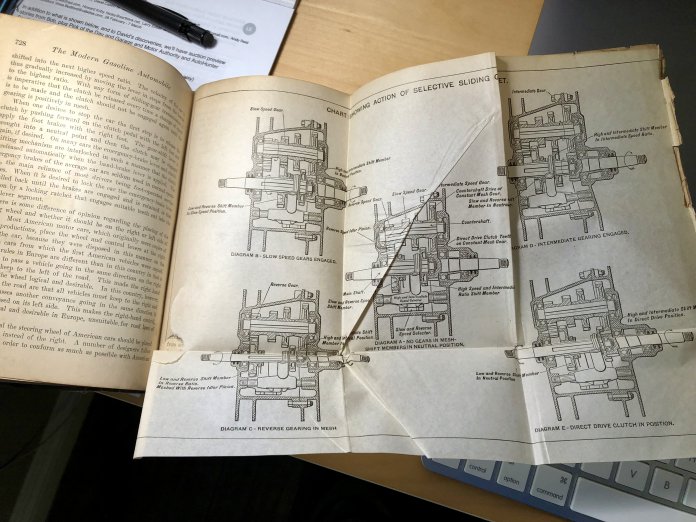“The gasoline car is now used almost universally, and the steam vehicle or conveyance propelled by electric power has been practically relegated to the background. The gasoline car has such obvious advantages and is so economical to maintain that when a proper analysis of its good features is made, the reason for its popularity will be apparent.”
So wrote Victor Page, a mechanical engineer, in 1915.
I know this because as I walked into church on a recent Sunday morning, a car-guy friend from the congregation handed me what I thought at first was a brick. The object had that heft and size.
But it wasn’t a brick; it was a book, The Modern Gasoline Automobile: it’s construction, Operation, Maintenance and Repair — Up to Date 1916 Edition.
The book spans 816 pages, providing:
“A practical, comprehensive treatise explaining all principles pertaining to gasoline automobiles and their component parts.
“The most complete up-to-date treatise on gasoline automobiles ever published
“Invaluable to motorists, students, mechanics, repair men, automobile draughtsmen, designers and engineers.
“Every phase of the subject being treated in a practical, non-technical manner.”
The pages include 575 detailed engineering illustrations and diagrams, some that fold out.
There are 15 chapters, each on a specific aspect of the gasoline automobile. For example, “How power is generated,” “Defining liquid fuels used and methods of vaporizing to obtain explosive gas,” “The chassis and its components,” and even “Elements of magneto-electric phenomena.”
And, yes, there’s one on what we’d call troubleshooting, or as Page puts it, “Practical hints to assist in locating power-plant troubles.”
But wait, there’s more!

The main text is preceded by a 55-page supplement featuring “a discussion of all new improvements in automobile design noted up to the closing of 1915 automobile shows including developments announced for the 1916 models of leading makers.”
The main text is followed by a 40-page catalog of other “practical scientific (and) technical” books from The Norman W. Henley Publishing Company.
In the text, Page notes, “The modern motor car has reached that period in its development where one can safely say that it has become perfected to such an extent that further improvements must be in matters of detail only and not in alterations of essential components.”
And yet, he takes 55 pages to present such details. So what was spanking brand new in 1915?
How about the V8 engine! Wait! Didn’t Henry Ford invent that for the 1932 model year? Not so, though he certainly popularized its use. Modern Gasoline Automobile notes that V8s had been used in racing boats and railroads and now were coming to the automobile.
For those for whom 8 cylinders were not enough, Packard was introducing its V12 and, the book points out, that with more explosions per revolution of the crankshaft and a longer-duration power stroke at that, “there is no need at this time to discuss further the pros and cons of the twelve-cylinder versus the eight or six… The questions resolves itself in to having a motor of high-power that will run with minimum vibration and that produces smooth action.”
The detachable cylinder head and overhead camshaft were growing in their application for the 1916 model year, we learn. Also gaining in popularity was vacuum-feed of fuel to the carburetor, as well as the use of the new Schebler carburetor and of self-starting systems, including those by Auto-Lite and Delco.
In regard to vehicle design, “the pronounced tendency… is to carry out stream line effect so that there are no sharp angles anywhere on the body.”
Another emerging trend: Seats for four occupants rather than just two and the placing of all seats closer to the vehicle’s center, was designed to provide a more comfortable riding experience. Also improving ride quality were advances in the design of cantilevered leaf springs.
Tilting steering-wheel mechanisms were being introduced, as were the Entz Electric Transmission, Knox Hydraulic Brakes, all sorts of new electric lighting options, a “positive drive” differential, and even convertible tops designed so they could be opened or closed by a single person without needing assistance.
That seems to be a pretty long list of new features for a mode of transportation we’ve been told is so perfected as to need improvements only in details, not in essentials.
Which makes me wonder what Victor Page might think about the cars of the mid-’60s, some 50 years after he wrote his brick-sized book, let alone those of a full century beyond his writing, as automakers were launching their push to abandon his beloved gasoline cars for those powered by electricity.





